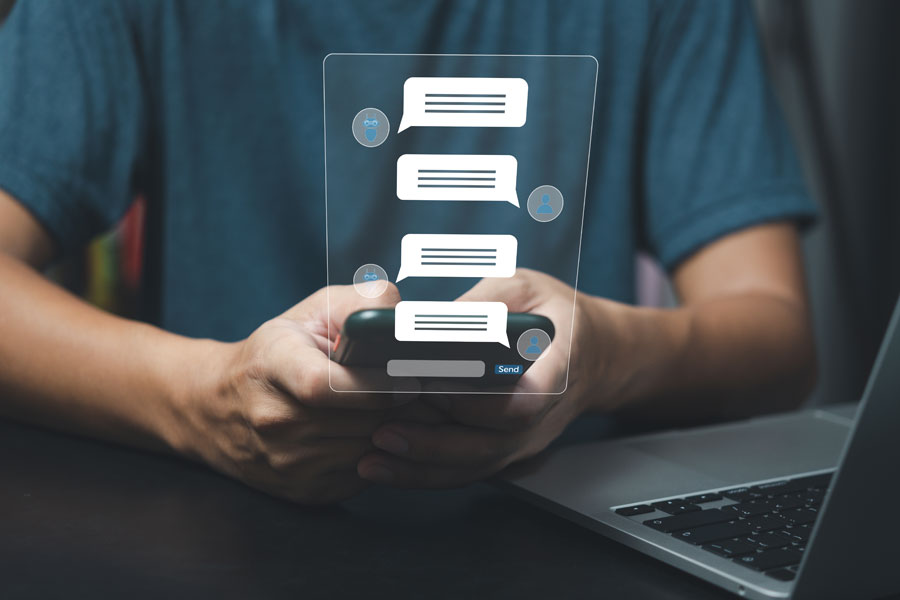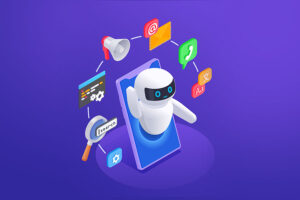Measuring the Success of Conversational AI in 2024 | Key Metrics and Analytics
When it comes to measuring the value of conversational AI, success isn’t merely a result but a meticulously crafted journey. But how do we truly gauge their effectiveness? That’s where key metrics come in – where every interaction and every query holds a wealth of insights.
Did you know that leveraging chatbots in businesses can save up to 2.5 billion hours? That’s because, on average, a customer support representative handles around 17 interactions every day. These stats underline the monumental impact of AI-powered conversational agents in streamlining operations and enhancing customer experiences.
Moreover, the capabilities of these bots are striking – they’re capable of completing 70% of conversations, showcasing their efficiency and adeptness in handling a vast array of tasks. It’s no wonder that 74% of customers actually prefer engaging with chatbots over a human corporate agent to resolve their queries.
In this exploration of conversational AI metrics, we uncover the crucial insights and implications they hold in shaping the landscape of user interactions and business efficiency.

What is the difference between a chatbot and an AI chatbot?
While both chatbots and AI chatbots facilitate conversations between users and machines, the key difference lies in the sophistication of technology and adaptability.
What’s a chatbot?
A chatbot is a computer program designed to simulate conversation with human users, typically through text or voice interactions. Chatbots can operate based on predefined rules and patterns (rule-based or scripted chatbots).
These bots follow specific paths and respond according to predetermined scenarios; and they might lack advanced learning capabilities or the ability to adapt beyond their programmed instructions.
Mostly, chatbots can handle simple tasks like FAQs, basic customer support, or providing information based on predefined scripts.
What’s an an AI chatbot?
AI chatbot, on the other hand, leverages artificial intelligence and machine learning to enhance its capabilities. AI chatbots use natural language processing (NLP), machine learning algorithms, and sometimes deep learning to understand and respond to user queries. This technology is commonly referred to as conversational AI.
They can learn from interactions, improving their responses over time based on user feedback and data analysis. AI chatbots can also handle more complex conversations, understand context, and provide more personalized and dynamic responses.

What are the key metrics to track in conversational AI?
Engagement rate
This metric measures how actively users interact with the AI chatbot. It helps gauge the usefulness of the AI chatbot based on the frequency and depth of interactions. For instance, high engagement might mean users find the chatbot helpful and informative, while low engagement could indicate a need for improvements in the chatbot’s content or user experience.
For example, if an AI chatbot for travel agency has a high engagement rate with users consistently asking for flight details or hotel recommendations, it indicates a strong user reliance on the bot’s assistance.
Goal completion rate
This tracks the successful accomplishment of tasks by users through the AI chatbot. It reflects how effectively the chatbot helps users achieve their objectives, such as making a purchase, booking an appointment, or finding information.
To illustrate, an AI chatbot in the banking sector’s high goal completion rate would indicate that users can easily check their account balance, transfer funds, or pay bills without encountering obstacles.
Satisfaction score (CSAT)
This assesses user contentment post-interaction. It’s often measured through surveys or feedback forms and provides a quantitative measure of user satisfaction.
After a customer service interaction, users might be asked to rate their experience on a scale of 1 to 5, providing insights into their satisfaction level.
Conversation duration
This measures the time users spend interacting with the conversational bot. It helps evaluate the efficiency and the complexity of user queries.
If an AI chatbot for customer support efficiently resolves queries within a short duration, it indicates effective handling of user issues.
Missed messages/Fallback rate
This metric evaluates unsuccessful bot responses. It indicates areas where the bot struggles to comprehend or provide relevant information, prompting the need for improvements.
Take for instance, if an AI-powered language translation chatbot frequently fails to understand nuanced phrases or slang, it reflects in a high fallback rate.
Conversation starter messages
Assessing the effectiveness of the initial bot prompts helps understand user engagement from the beginning of the conversation.
A bot initiating a conversation with a personalized greeting might have a higher engagement compared to a generic or uninteresting opening.
Bot intent analytics
Tracking user intents helps in understanding and optimizing the bot’s understanding of user queries and needs.
An AI chatbot for e-commerce recognizing and correctly responding to user intent to find specific product categories or sizes demonstrates strong intent analytics.
Chat volume
This measures the frequency of successful interactions, reflecting the popularity or demand for AI chatbot.
For instance, iIf a news bot experiences a surge in chat volume during major events or breaking news, it signifies high user interest.
Number of successful interactions/leads
This metric determines the bot’s impact on generating leads or achieving desired outcomes.
To illustrate, a real estate chatbot successfully scheduling property viewings or collecting contact details for interested buyers indicates effective lead generation.
Key Performance Indicators (KPIs)
This encompasses various metrics, including successful interactions, lead generation, and contentment levels, providing an overall view of the AI’s performance.
To demonstrate, a combination of a high goal completion rate, positive CSAT scores, and increased chat volume collectively indicates strong KPIs for a customer support AI chatbot.
The power of data in shaping the future of interactions.
Every statistic, every percentage, will echo a profound story – a narrative of innovation, efficiency, and user-centricity.
From the astounding hours saved in businesses to the preference of users for AI-driven assistance, the impact of chatbots transcends mere convenience. It’s a huge shift in how we engage, how we assist, and how we thrive in the digital landscape.
But beyond the numbers lies the heart of these metrics – the relentless pursuit of betterment. The insights gleaned from tracking engagement rates, satisfaction scores, and completion rates aren’t just figures on a graph – they’re the stepping stones to enhanced experiences, streamlined operations, and unprecedented user satisfaction.
Armed with metrics as our guiding lights, let us embrace innovation, harness insights, and craft a future where Conversational AI isn’t just intelligent – it’s intuitively empathetic, seamlessly efficient, and undeniably indispensable!
Do you want to build a custom AI chatbot for your business? Contact us!












